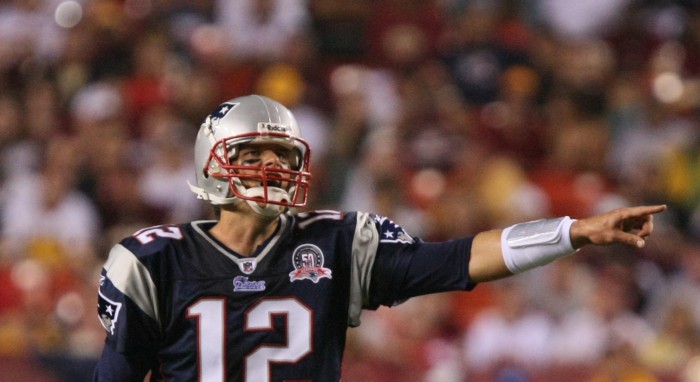In his 15th season in the NFL, Tom Brady still manages to shatter every misconception about him. After the New England Patriots’ disastrous loss to the Kansas City Chiefs in Week 4 of last season the press was calling for Brady’s head. His critics were saying that he was too old, that he couldn’t throw deep, and that the Patriots need a fresh approach. In response, Brady won the Super Bowl and has remained one of the best quarterbacks in the NFL. Through the first three weeks of the 2015 season, Brady’s stat line is nine touchdowns, zero interceptions, 72.2 per cent completion rate, and a 119.6 quarterback rating.
At 38 years old, the sixth round draft pick has remained effective because he is willing to evolve his approach to the game. Funnily enough, this old dog has incorporated two small yet very important new tricks into his throwing mechanics: He pivots more with his hips and has lowered his release point.
In looking at Brady’s 2014 game tapes, it’s clear that his release point was a good two feet over his helmet. A typical 2014 Brady pass looked something like this:
His knees are nearly locked straight and in doing so he removes his lower body from the pass, resulting in less momentum and force in his throws.
Compare him to the NFL’s best quarterback Aaron Rodgers and it is immediately noticeable how Rodgers more so incorporates his hips into his throwing motion. This brings physics on the Green Bay quarterback’s side and helps him throw the ball with velocity every time he drops back.
When Rodgers takes his shot downfield, he turns his whole body through his hips with the throw and delivers a phenomenally accurate strike for the touchdown
The second thing to pick up on in Brady’s 2014 game tape is that his release point is two feet above his head, lessening the power that his wrist provides on the release. When releasing the ball, the wrist should create a snapping motion, which is instrumental in generating tight spirals and velocity on quick passes. An outstretched arm makes it more difficult to replicate the snapping motion and hampers the quarterback, who has to rely on his arm strength to generate power. This, combined with his locked legs, resulted in weaker passes.
In comparison, Rodgers releases the football from a lower point than Brady. He lets the ball go from around his ear. This does two things: It helps him use the motion of his wrist to generate more velocity and accuracy and it allows him to get the ball out of his hands quicker. This is because the passing motion takes a lot less time when the release point is closer to the ear.
Over the off-season, Brady must have worked non-stop because he's looked phenomenal throwing the ball in 2015.
His 400th touchdown pass demonstrates a quicker, more economical motion that takes valuable time off his pass.—a quarter of a second can be the difference between being sacked or throwing for a touchdown. Perhaps this has contributed to Brady taking two fewer sacks after four weeks in 2015 than in 2014 at the same point.
Brady, however, has the seen the greatest improvement in his deep ball. By this point last year, Brady was 1 of 16 in deep passes according to NESN This is terrible, considering that a deep pass is defined as one that travels over 20 yards in the air. That means that Brady completed just one pass of more than 20 yards through four weeks in 2014. This year, Brady’s deep accuracy is near the top of the league, his throwing power looks stronger than ever, and he’s only getting started. If he can continue to play at this pace, he won’t only have another historic season, but may be able to ride off into the sunset with a fifth Super Bowl ring.
Amazingly enough, Brady was able to do all of this in his 15th NFL season. By age 38 most quarterbacks are struggling to remain relevant. Brady, seemingly impervious to time, has managed to revamp the way he plays.










Excellent analysis. Thank you.